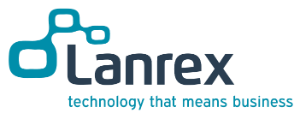 SharePoint 2010 is rarely bought as a standalone software product, most often it is bundled in with a negotiated Microsoft Enterprise Agreement. Because of this many business leaders are left scratching their head – When should I use SharePoint? What should I use SharePoint for? When Shouldn’t I use SharePoint? And, what exactly is this additional extra I purchased?
SharePoint 2010 is rarely bought as a standalone software product, most often it is bundled in with a negotiated Microsoft Enterprise Agreement. Because of this many business leaders are left scratching their head – When should I use SharePoint? What should I use SharePoint for? When Shouldn’t I use SharePoint? And, what exactly is this additional extra I purchased?
In the past we have seen a ‘technology first approach’ this means implement the new technology then gather the requirements and needs for the technology later, this type of approach can often lead to displeasing and unsatisfying results in usage, engagement and efficiency.
SharePoint provides a vast number of capabilities that empower business users. SharePoint enables users to collaborate with each other, tag and rate content, self-publish, and develop their own solutions. It is because of this great power SharePoint gives users that it needs to be managed carefully before it grows quickly out of control.
Like any software, SharePoint needs to be aligned to a strategy, one common mistake we see many SMB’s make is - SharePoint is the strategy when in fact SharePoint should be used to align with your existing businesses strategy and its related areas such as HR, IT, Sales etc.
This may mean that many organisations are now faced with a need to re-architect their SharePoint environments in a way that is more conducive to reaching the business goals and strategic objectives.
Do not fret, the following article will discuss how to develop a successful SharePoint strategy whether it is for a first time implementation or to re-align your software to ensure it is working toward reaching the business vision.
Your SharePoint strategy should include the following components:
1- Who are the Stakeholders?
Stakeholders are not only the decision makers in the business, when considering implementing new software such as SharePoint you need to consider all parties involved. Depending on your reason for implementing SharePoint your stakeholders will be different for each scenario. When you look to identify stakeholders, recognize that there are different types of stakeholders, all of whom should be included in the development of your solution strategy and the ongoing governance model.
An important note to remember is that users are critical to the ultimate success of your SharePoint solution, so do not be exclusive when considering the stakeholders in your strategy. It is important that the solution is easy to use and managed, does not disrupt the flow of work and does not aggravate the end users, otherwise adoption will be unsuccessful.
2 – Define key Business objectives
As Lao Tzu once said – the journey of a thousand miles begins with one step, and the first step on the road to SharePoint success is developing a good understanding of your business objectives that you are trying to accomplish.
To increase the chances of a successful SharePoint implementation, key stakeholders need to work together to carefully address the key business objectives– it is important to remember that SharePoint should align with your key objectives and not the other way around.
An example of one Business objective may be:
Decrease amount of time spent on training and development of new starters through efficient Information sharing and training programs. Improving ‘Time to Talent’. Reducing our bottom line.
3- Does the software have capabilities that are relevant to reaching business objectives?
The IT experts you have engaged (whether they be internal or an outsourced company) will need to be included when completing this section of your strategy. It is imperative that a thorough understanding of the features SharePoint offer is utilised at this time.
By knowing all the features and capabilities of SharePoint you are able to align the SharePoint software to your previously defined business objectives (Step 1)
Take the earlier example of your business objective:
Decrease amount of time spent on training and development of new starters through efficient Information sharing and training programs. Improving ‘Time to Talent’. Reducing our bottom line.
SharePoint can enhance this Business objective through a range of features
- The People and Expertise search – Allowing your new starters to find people within the business with the expertise they are looking to develop.
- Follow people, documents and tags – this gives them greater access and proximity to power enabling them to learn faster and from more developed and seasoned staff members.
- Search – Giving them the ability to ‘look-up’ information they need, when they need it, so they can learn ‘as you go’
- Activity feeds with ‘# hashtag’ features and ‘@ mentions’ – This helps with the search refinement and also with offering praise – (Tip: mentions and praise often encourage faster development.)
By using these features of SharePoint it has the ability to reduce the amount of training time each employee needs as they can now ‘Learn on the go’ and increases their output whilst still in the early stages of their employment. This effectively meets the needs and enhances the ability of the business to achieve their business objective.
*Any easy way to display this section of your plan is in table form, with your business objectives on the left hand side and on the right the SharePoint features that can assist in achieving these on the right
**If SharePoint features cannot enhance or enable your business to reach their objectives, you should not go ahead with implementation.
4- Governance
The Governance section of our SharePoint strategic plan should be viewed as your company’s insurance policy.
When the SharePoint environment starts to expand and more sensitive data starts to be housed within it – you need to ensure you have the right team and policies in place to contain any potential disasters.
Governance is about supplying a task force that outlines and maintains all the ‘rules of the SharePoint environment’. They are used to provide a quality user experience and ensure any policy violations are dealt with and resolved quickly.
The governance committee should have clearly defined the rules and responsibilities. The SharePoint governance committee, are not only representatives from the business and IT sides of the organization, it should also include executives and organisational champions (Individuals regardless of their role within the business who act as role models)
Governance ensures that the solution system is aligned with the business objectives so that it continuously delivers business value. The governance section of your strategy plan clarifies your SharePoint usage, creates a structured framework to measure and manage the solution and outlines all policies, guidance and enforcement procedures.
5-How will your organisation define and measure success.
Defining measures of success is key to any new implementation strategy, this is the time when you test the value of your organisations investment. By setting clear lines and measures of success, a metrics program should be established so that you can demonstrate the solution is meeting the business objectives. A good metrics program includes both qualitative and quantitative measures that tie the SharePoint solution as directly possible (responsible) to the businesses successes.
Qualitative metrics can be uncovered from user feedback during any of the quality assurance testing and initial training and early stages of implementation
Quantitative costs can be measured with such defined guidelines as ‘Reduced Training costs for new starters.
To gain a deeper understanding the success of your It is always a good idea to canvass user stories and experiences that describe how using SharePoint tools (finding a person with an unknown skill, following individuals etc.) helped contribute to increased profitability, increased client output, or other metrics that are already reflected in the key performance measures for the organization.
Governance committees should continually document and measure metrics to demonstrate the extent to which their governing process is improving the overall SharePoint enterprise
Contact Lanrex today, to discuss your successful SharePoint implementation strategies.
You might also like: 5 things you need for a successful SharePoint Strategy

We’re creating a business that provides unlimited potential for our team. We believe that each and every team member has an equal opportunity to play a strategic and impactful role.
GET IN TOUCH
